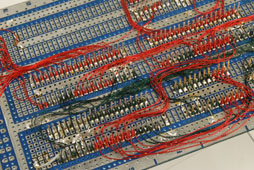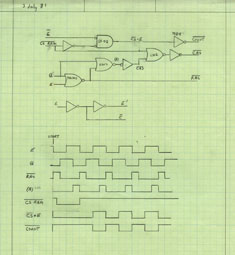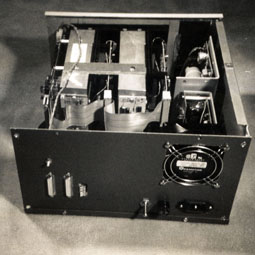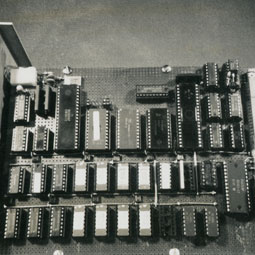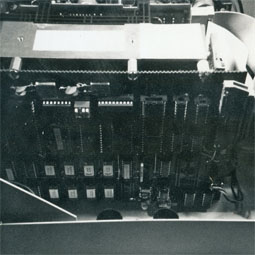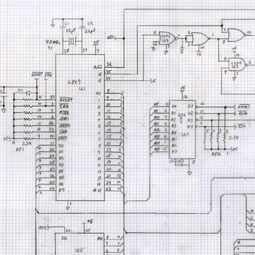The Motorola 6809 microprocessor was introduced in 1979 and soon it appeared in personal computers. Two Motorola engineers, Terry Ritter and Joel Boney, wrote a three part series about the design of the 6809 starting in January 1979 issues of Byte Magazine. Southwest Technical Products had a new 6809 based computer but also sold the CPU board so you could upgrade your existing SWTPC6800 computer. The November 1980 issues of Kilobaud Microcomputing had a single board 6809 system design article written by a Motorola applications engineer, Tim Ahrens.
In June 1981 Motorola introduced a 64K bit dynamic RAM design kit with 10 MCM6664 chips for only $150. What a deal, the regular price was $49 each! My next project would be a homebrew 6809 computer. The 1 MHz 6809 microprocessor was $32, the floppy disk controller was $25, and the total chip cost was around $300. The Shugart SA-400 floppy disk drives were $300 each. The complete system was around $1100. Part List
The complete computer board would fit on a wire wrap Vector board the size of a floppy drive. The board held the 6809 CPU, 2K EPROM, floppy disk controller (WD 1771), and two serial ports (6850 and 6551). It would run the same FLEX operating system as the SWTPC computers.
My first iteration was a dual floppy drive system in a box about 6 inches high, 12 inches wide and 12 inched deep. The photos below shows two power supplies (+5V and +12V), two Shugart SA-400 5 1/4 inch floppy drives and the computer board.
My second iteration was a single floppy system in a Bud Showcase instrument cabinet with a handle on the top (6.5 H, 8.3 W, 11 D). This system used a WD1797 FDC that supported double density dual sided disks. The FLEX operating system and most applications would run in 32K of RAM so I mapped the other 32K as a RAM-DISK. The single density single sided floppies of the day only held 90K so a 30K RAM-DISK would hold the OS with an editor, text processor, and a few utilities. The real floppy drive held your data. I carried this big lunch box to work every day and connected it between my computer terminal and our PDP 11/34 development computer. (This was replaced by a VAX 750.) I used this until we got IBM PCs and XTs.
 Bud Showcase instrument cabinet
Bud Showcase instrument cabinet
Design schematics. The CPU and memory schematic is the left, and the I/O schematic on on the right. There are two I/O versions, one using the WD1771 FDC and double density version one using the WD1797 FDC.

